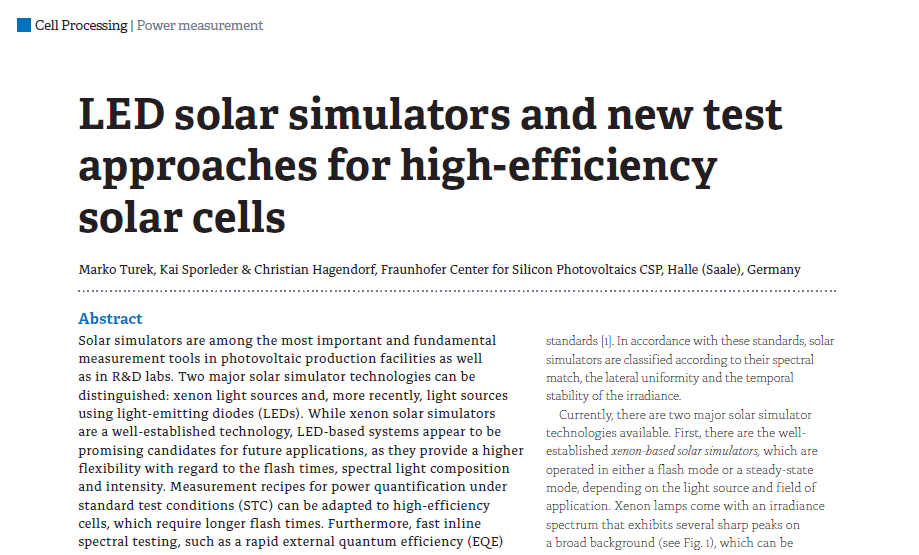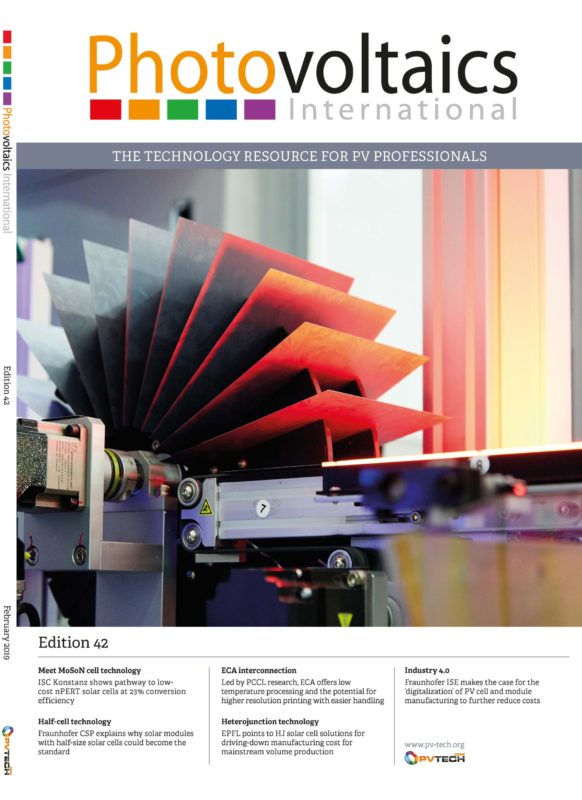By Marko Turek; Kai Sporleder; Christian Hagendorf
Solar simulators are among the most important and fundamental measurement tools in photovoltaic production facilities as well as in R&D labs. Two major solar simulator technologies can be distinguished: xenon light sources and, more recently, light sources using light-emitting diodes (LEDs). While xenon solar simulators are a well-established technology, LED-based systems appear to be promising candidates for future applications, as they provide a higher flexibility with regard to the flash times, spectral light composition and intensity. Measurement recipes for power quantification under standard test conditions (STC) can be adapted to high-efficiency cells, which require longer flash times. Furthermore, fast inline spectral testing, such as a rapid external quantum efficiency (EQE) test or a rapid reflectivity test, becomes feasible. However, the development of LED-based systems requires well-designed optical and electronic components to ensure high-precision measurements on the basis of a laterally uniform and temporally stable light field.



